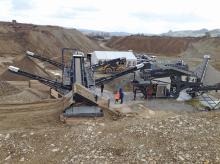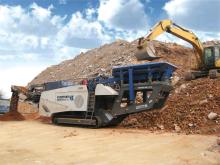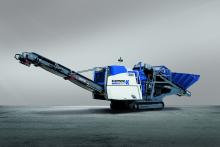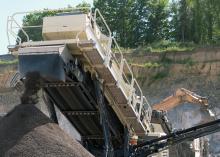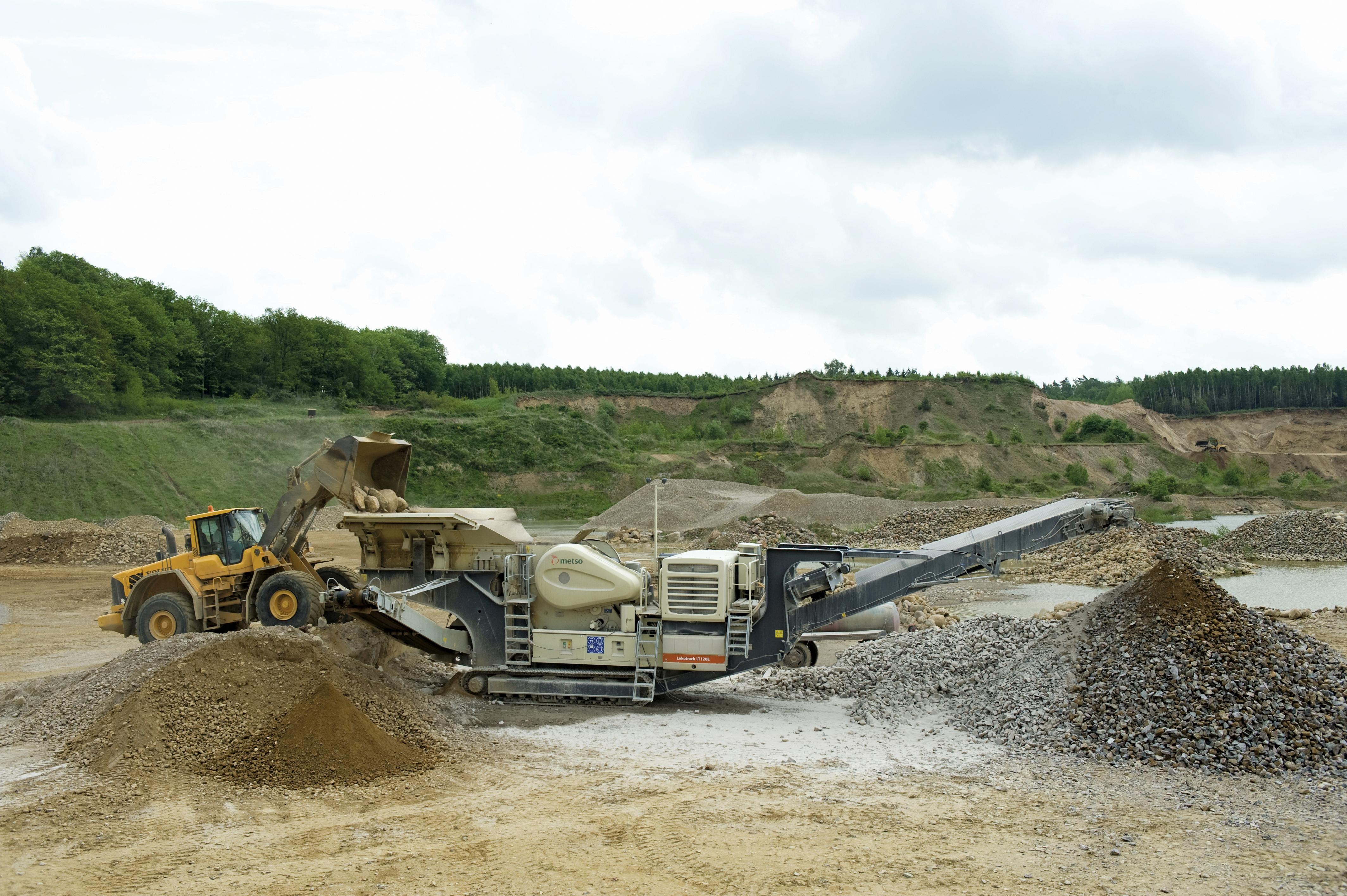
A mobile diesel-electric primary crusher is being used at a German quarry to help produce one million tonnes of aggregates a year
The German quarry Heidelberger Sand und Kies has an annual production of about one million tonnes of aggregates for road materials and asphalt mix, and sand.
Located at Langhagen, outside the city of Rostock, it has an operational area of over 30 hectares and processes natural sand and gravel reserves. Inside the gravel, boulders up to 1,200mm in size can be found with boulders sized up to 700mm being crushed and screened to different sized aggregates.
Its main products are 0-2mm concrete sand; 2-8mm, 8-16mm and 16-32mm concrete aggregates; 0-32 mm, 0-45 mm, 0-56mm for road base materials; 0-5mm manufactured sand; and 2-8mm, 8-16mm, 5-22mm and 5-32mm classified gravels.
To help with production, Heidelberger Sand und Kies, which is part of the global Heidelberg Cement Group, acquired one of
The primary crushing with the Lokotrack is operated in two shifts, 12 hours per day, targeting to reach aggregates size suited for the secondary crushing.
The Lokotrack LT120E (rented with option to purchase) produces a css of 110mm with an average production of between 180-200tonnes/hour while the secondary unit, a Nordberg G2011 cone crusher produces a css of 22mm.
The diesel-electric Lokotrack LT120E is said to have proved to be a very cost-effective solution for Heidelberger Sand und Kies, while at the same time fulfilling their environmental regulations.
It is said to offer good energy economy through a combination of several factors.
The C120 crusher with high inertia flywheels provides a balanced process while the CAT C13 Tier 4 diesel with generator runs steadily at 1,500rpm.
After more than seven months of operation and over 970 crusher hours, Heidelberger Sand und Kies says it is quite happy with the new Lokotrack jaw plant.
“With this extremely difficult feed material, we have achieved good and steady capacities.
During the rental period, no unexpected stoppages occurred,” says Hans-Jürgen Jeschke, Heidelberg’s Langhagen plant quarry manager.
“The C120 jaw crusher processes and keeps even the roundest and large boulders inside the crusher cavity.
“We are happy that the diesel-electric-driven Lokotrack also fully meets the environmental targets set by
When moving the unit to the next site, we may be able to test the plug-in of the Lokotrack to the electrical network to run it fully electrically.”
According to Jeschke the Lokotrack LT120E has raised interest among other Heidelberg Cement units abroad.
“We have been visited by our colleagues from Ukraine and Romania, for example. For us, the most important detail is the overall economy.
Lokotrack helps us maintain our cost-effectiveness,” says Jeschke.
The latest Lokotrack LT120 jaw plant on the market is available as a hydraulic or electric version.
High synergy is featured in the design of both alternatives to ensure that the LT120 accurately suits the customer’s specifications.The Lokotrack LT120E can be used as a diesel-electric driven unit powered by a diesel motor with a 420kVA generator or fully electric by connecting the unit to the external electric network with a cable.
The crusher, conveyor and magnetic separator are electrically driven. The starting system of the crusher allows reverse running in case of oversize feed blockages.
The tracks, vibrating feeder and the optional boom and hammer are powered by the hydraulic system.RSS

